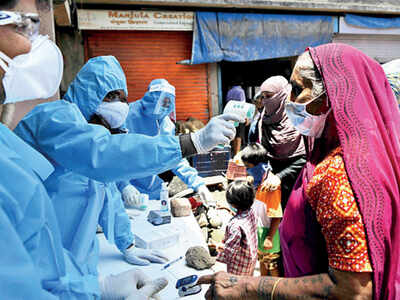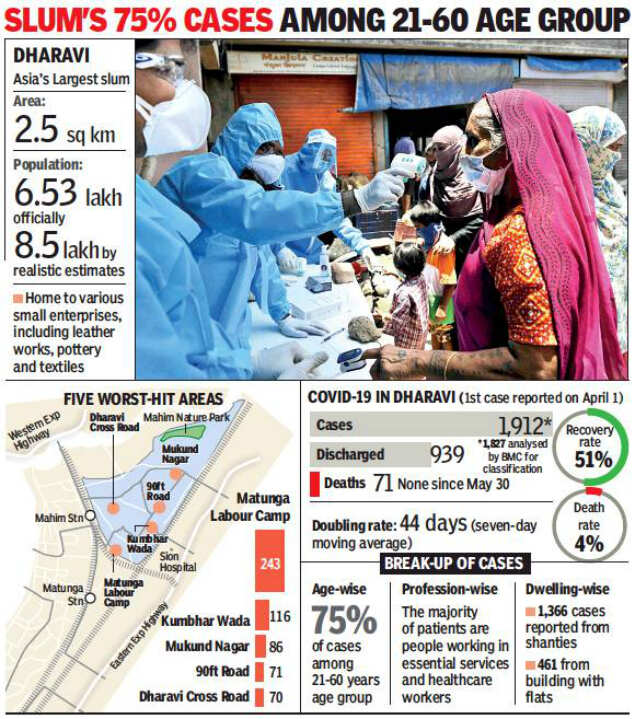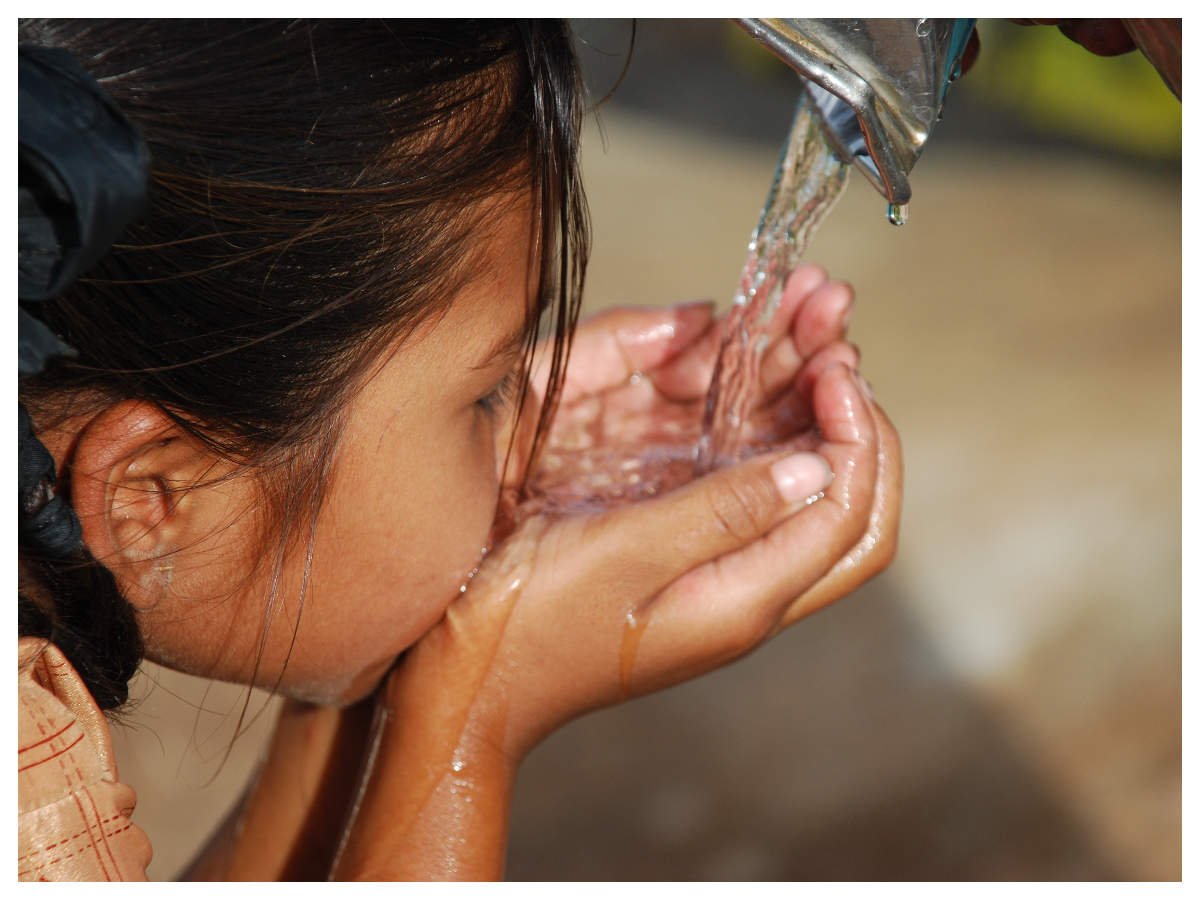
In a ray of hope for the city, over two months after the first Covid-19 case was reported from Dharavi, the doubling rate of cases in the slum has slowed down to 44 days from 25 days just 10 days ago.

Most of the city’s coronavirus cases have been reported from slums, where social distancing and other measures have been difficult to maintain. In this light, the slowing down of Covid-19 in Asia’s largest slum is being seen in a positive light by the civic administration. In comparison, the doubling rate for Mumbai as a whole is now 23 days. The calculations are based on seven-day moving averages, a standard method to gauge the effects of a pandemic.
Also, the recovery rate of patients in Dharavi now stands at 51%. The BMC, which analysed 1,827 cases from the slum (from a total of 1,912, which includes 71 deaths), said 939 of the patients have been discharged. On Sunday, 13 new cases were reported, and no deaths. This was the fourth day in a row when less than 20 cases were reported from the slum. Civic officials said it is a positive sign that no deaths have been reported from Dharavi since May 30. The total number of positive cases in G-North ward, which contains Dharavi, was 2,957 as of Sunday, including 96 deaths, said Kiran Dighavkar, assistant municipal commissioner of the ward. He said that the number of cases in the ward has not crossed the 3,000 mark.
He said the BMC ensured “aggressive testing and screening” in the slum. Since the first case was reported in the area on April 1, over six lakh screenings were conducted through various means, including door-todoor surveys, visits to municipal dispensaries, and mobile van screenings by private doctors, said civic officials.
“The proactive tracing of Covid-positive patients and thereon ensuring better recovery is what has helped. People in as many as 47,500 houses in the locality were screened by doctors and private clinics,” said Dighavkar.
“Also, we focused on ensuring that senior citizens were surveyed, so that in case they were found infected, they could be treated at the earliest since they form a high-risk group. A total of 8,540 people have been isolated and institutionally quarantined till date. We aimed towards the early detection of all positive patients so that they could be separated from the community at large and the infection could be kept in control.”

Most of the city’s coronavirus cases have been reported from slums, where social distancing and other measures have been difficult to maintain. In this light, the slowing down of Covid-19 in Asia’s largest slum is being seen in a positive light by the civic administration. In comparison, the doubling rate for Mumbai as a whole is now 23 days. The calculations are based on seven-day moving averages, a standard method to gauge the effects of a pandemic.
Also, the recovery rate of patients in Dharavi now stands at 51%. The BMC, which analysed 1,827 cases from the slum (from a total of 1,912, which includes 71 deaths), said 939 of the patients have been discharged. On Sunday, 13 new cases were reported, and no deaths. This was the fourth day in a row when less than 20 cases were reported from the slum. Civic officials said it is a positive sign that no deaths have been reported from Dharavi since May 30. The total number of positive cases in G-North ward, which contains Dharavi, was 2,957 as of Sunday, including 96 deaths, said Kiran Dighavkar, assistant municipal commissioner of the ward. He said that the number of cases in the ward has not crossed the 3,000 mark.
He said the BMC ensured “aggressive testing and screening” in the slum. Since the first case was reported in the area on April 1, over six lakh screenings were conducted through various means, including door-todoor surveys, visits to municipal dispensaries, and mobile van screenings by private doctors, said civic officials.
“The proactive tracing of Covid-positive patients and thereon ensuring better recovery is what has helped. People in as many as 47,500 houses in the locality were screened by doctors and private clinics,” said Dighavkar.
“Also, we focused on ensuring that senior citizens were surveyed, so that in case they were found infected, they could be treated at the earliest since they form a high-risk group. A total of 8,540 people have been isolated and institutionally quarantined till date. We aimed towards the early detection of all positive patients so that they could be separated from the community at large and the infection could be kept in control.”

Coronavirus outbreak
Trending Topics
LATEST VIDEOS
City
 Shocker from Tamil Nadu: Patient murdered brutally by unidentified men in Madurai hospital
Shocker from Tamil Nadu: Patient murdered brutally by unidentified men in Madurai hospital  Rajasthan: Pak spies selling army info nabbed in Operation Desert Chase
Rajasthan: Pak spies selling army info nabbed in Operation Desert Chase  BJP leader Sabyasachi Datta attacked by TMC workers in Kolkata
BJP leader Sabyasachi Datta attacked by TMC workers in Kolkata  Watch: ‘Hanuman’ dances to the tune of Dhol at Hanuman Temple near Connaught Place in Delhi
Watch: ‘Hanuman’ dances to the tune of Dhol at Hanuman Temple near Connaught Place in Delhi
More from TOI
Navbharat Times
Featured Today in Travel
Get the app





